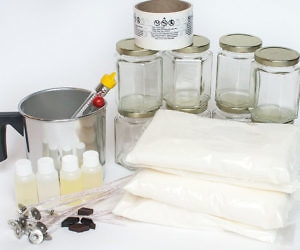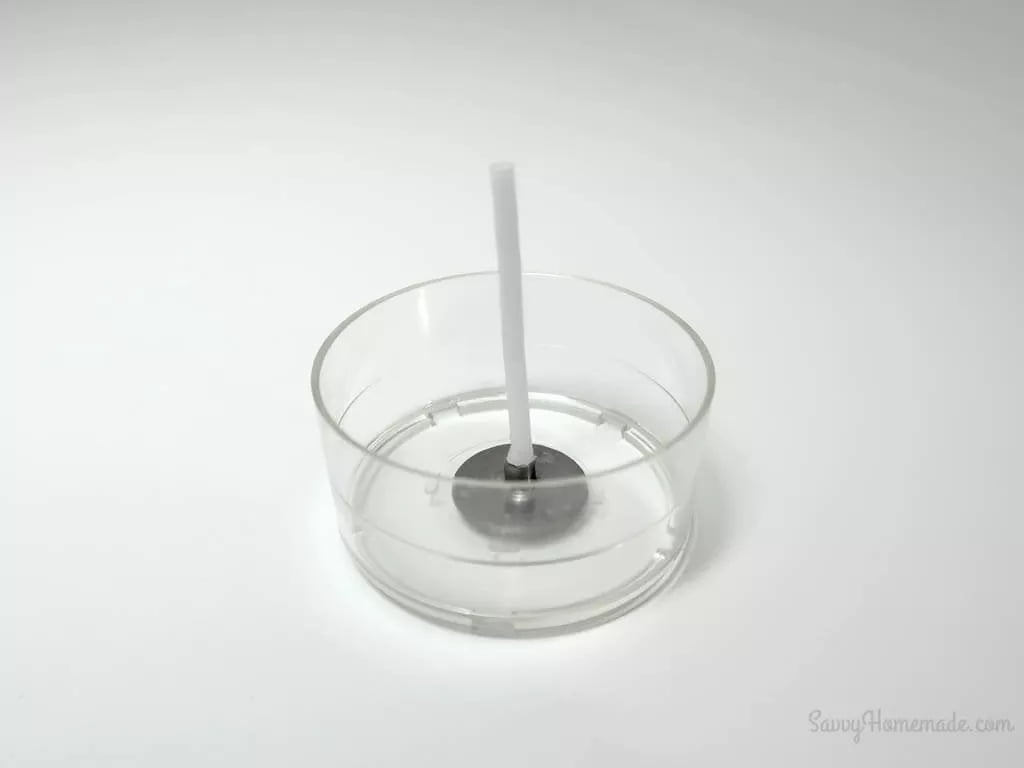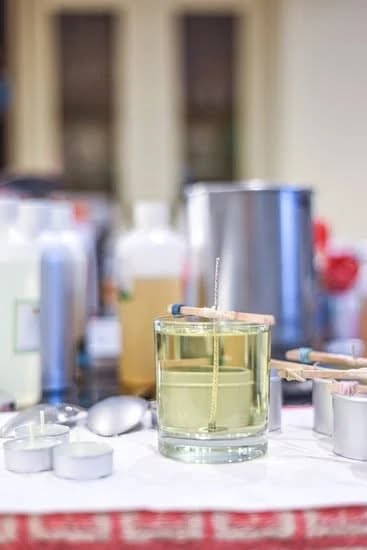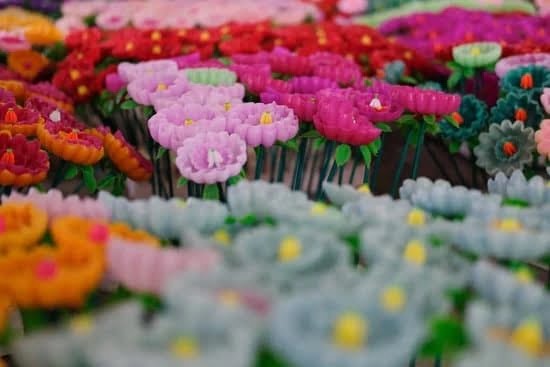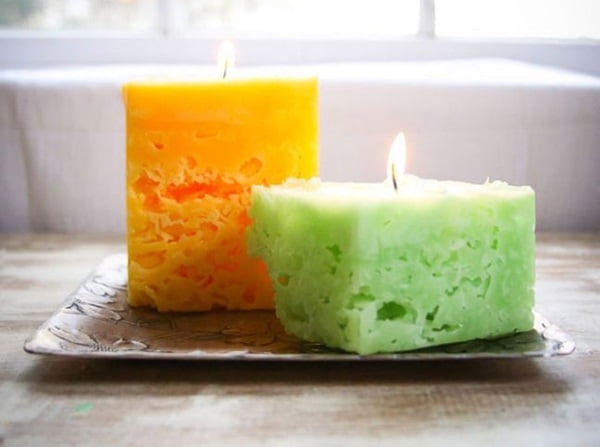Are you interested in creating your own unique and fragrant soaps and candles? Whether you are a professional crafter or new to the DIY world, having the right soap and candle making supplies is essential to crafting beautiful and high-quality products. From essential oils and molds to waxes and lye, these supplies are crucial for producing homemade soaps and candles that stand out.
To start your soap and candle making journey, it’s important to understand the basics of both crafts. In this article, we will cover everything you need to know about getting started with soap and candle making supplies, including the essential tools, materials, ingredients, fragrances, safety precautions, tips for success, and exploring different techniques and styles.
With the right knowledge and a well-stocked supply inventory, you can soon be on your way to creating luxurious soaps and aromatic candles that are perfect for gifting or enjoying yourself. So let’s delve into the exciting world of soap and candle making supplies.
The Basics of Soap Making
Soap making is a creative and fulfilling hobby that has been enjoyed by people for centuries. Whether you are a beginner or an experienced soap maker, it is important to understand the basics of soap making, including the essential ingredients and equipment needed to create your own beautiful and aromatic soaps.
Ingredients for Soap Making
One of the key elements in making soap is understanding the different ingredients that are used to create various types of soaps. The primary ingredients include oils, lye (sodium hydroxide), water, and fragrances. Each type of oil used in soap making contributes unique properties to the finished product, such as hardness, lather, and moisturizing abilities. It is essential to research and understand the properties of different oils before formulating your soap recipes.
Equipment for Soap Making
In addition to understanding the ingredients needed for soap making, having the right equipment is crucial for a successful and safe soap-making process. Some essential equipment includes a heat-resistant mixing bowl, a stick blender, a digital scale for accurate measurements of ingredients, molds for shaping the soap, and safety gear such as goggles and gloves when working with lye.
It is important to invest in high-quality equipment to ensure that your soap-making experience is efficient and enjoyable.
Sourcing Soap Making Supplies
When starting out in soap making or looking to replenish your inventory of supplies, it is crucial to find reputable suppliers for your soap making needs. There are many online stores and local suppliers that offer a wide range of high-quality soap making supplies such as oils, lye, molds, fragrance oils, colorants, and other additives. Researching and sourcing the best quality supplies will ultimately contribute to the success of your soap-making endeavors.
Understanding the basics of soap making ingredients and equipment is fundamental for anyone interested in creating their own artisanal soaps at home. With the right knowledge and tools at hand, you can confidently embark on a fulfilling journey into the world of handmade soaps using high-quality soap-making supplies.
The Art of Candle Making
Candle making is a timeless art that allows individuals to create beautifully scented and decorated candles for personal use or as thoughtful gifts for others. To embark on this creative journey, it is important to gather the essential tools and materials necessary for successful candle making. Here are the basic items you will need:
- Wax: The foundation of any candle, choosing the right wax is crucial. Whether it’s paraffin wax, soy wax, or beeswax, each type has its own unique properties and melting points.
- Wick: The wick is what sustains the flame of the candle. It is important to select the appropriate size and type of wick based on the diameter and composition of your candle.
- Fragrance Oils: If you desire scented candles, fragrance oils are essential. There are a wide variety of scents available, from floral and fruity to woodsy and spicy.
- Double Boiler: A double boiler or a makeshift version using a saucepan and heatproof bowl is necessary to melt the wax gently without direct heat.
- Thermometer: To ensure that your wax reaches the proper temperature before adding fragrance oils or pouring into molds, a thermometer is an indispensable tool.
Once you have gathered these essential supplies, you can begin experimenting with different candle making techniques and styles such as container candles, pillar candles, or even novelty shapes like stars or hearts. Additionally, don’t forget to consider safety measures when working with hot wax and open flames. Protective gear such as gloves and goggles can provide peace of mind while creating your beautiful homemade candles.
Choosing the Right Fragrances for Your Soap and Candles
When it comes to creating your own handmade soaps and candles, choosing the right fragrances is a crucial step in the process. The right scent can enhance the overall experience for the user, making it not only visually appealing but also aromatically pleasing. There are a variety of fragrance options available for both soap and candle making supplies, from essential oils to fragrance oils, each with their own unique characteristics.
Understanding Fragrance Oils Versus Essential Oils
Fragrance oils are synthetic scents created in a laboratory, offering a wide range of options that may not be available in nature. On the other hand, essential oils are derived from natural sources such as plants and flowers, providing a more natural and holistic option for adding scents to your products. Both options have their own set of benefits and drawbacks, so it’s important to understand the differences when choosing fragrances for your soap and candle making projects.
Consideration for Scent Combinations
When selecting fragrances for your soap and candle making endeavors, consider how different scents can complement each other. Some fragrances blend harmoniously together while others may clash or overpower one another. It’s important to experiment with various scent combinations to find the perfect mix that suits your preferences. Additionally, understanding the scent throw – or how strong the fragrance will be once used – is crucial in creating a balanced and enjoyable final product.
Personal Preferences and Customization
Ultimately, choosing the right fragrances for your soap and candles comes down to personal preference. Consider what scents you enjoy personally and what you believe would resonate well with potential users.
Whether you opt for calming lavender, refreshing citrus notes, or warm vanilla undertones, customization allows you to create unique and personalized products that speak to your individual tastes and creative vision. By exploring different fragrance options within soap and candle making supplies, you can truly make your creations stand out in both aroma and aesthetic appeal.
Safety Precautions When Working With Soap and Candle Making Supplies
Working with soap and candle making supplies can be a fun and rewarding experience, but it’s important to prioritize safety at all times. Here are some key safety precautions to keep in mind when working with these supplies:
- Always work in a well-ventilated area to avoid inhaling any fumes from the ingredients used in soap and candle making.
- Wear appropriate protective gear such as gloves and goggles to protect your skin and eyes from potential irritants or splashes.
- When handling lye, a key ingredient in soap making, it’s crucial to follow proper safety measures. This includes wearing gloves, long sleeves, and mixing the lye in a well-ventilated area to avoid inhaling any fumes.
- Keep all supplies out of reach of children and pets to prevent accidental ingestion or exposure.
In addition to these precautions, it’s important to educate yourself on the proper handling of each individual ingredient used in soap and candle making. Understanding the potential risks associated with different materials will help you take necessary precautions to keep yourself safe throughout the process.
Ultimately, prioritizing safety when working with soap and candle making supplies ensures that you can enjoy the creative process without compromising your well-being. By following these precautions and staying informed about best practices for handling ingredients, you can create beautiful soaps and candles while minimizing any potential risks.
Tips for Successful Soap and Candle Making
When it comes to successful soap and candle making, there are a few essential tips that can make the process easier and more enjoyable. Firstly, it’s important to invest in high-quality soap and candle making supplies. This includes natural waxes, fragrance oils, essential oils, molds, and other tools and equipment. By using the best materials, you can ensure that your finished products will not only look better but also be of higher quality.
Another tip for successful soap and candle making is to carefully follow recipes and instructions. Whether you’re a beginner or an experienced crafter, accurate measurements and precise techniques are crucial for achieving the desired results. Additionally, keeping a detailed record of your recipes can help you replicate successful batches in the future or troubleshoot any issues that may arise.
Furthermore, experimenting with different techniques and styles can elevate your soap and candle making skills. Whether it’s trying out new swirling techniques for soap or creating unique layering designs for candles, don’t be afraid to get creative. Embracing creativity is one of the most rewarding aspects of this craft.
| Soap Making Tip | Candle Making Tip |
|---|---|
| Invest in high-quality supplies | Experiment with different techniques |
| Follow recipes carefully | Use accurate measurements |
| Keep detailed records of recipes | Embrace creativity in designs |
Exploring Different Techniques and Styles in Soap and Candle Making
When it comes to soap and candle making, there are countless techniques and styles to explore, each offering its own unique creative process and end result. One popular technique in soap making is the cold process method, which involves mixing oils and lye to create a chemical reaction that results in soap. This method allows for the use of various molds, colors, and additives to achieve different textures and designs in the finished product.
On the other hand, candle making techniques often include container candles, pillar candles, taper candles, and more. Each style requires different materials and approaches to achieve the desired candle shape and texture.
In addition to traditional methods, there are also innovative techniques that have gained popularity in recent years. Melt and pour soap making is a beginner-friendly method that involves melting pre-made soap base and adding colorants, fragrances, and other additives before pouring the mixture into molds.
This approach allows for endless creativity as makers can experiment with different colors, scents, and embeds to create unique soap bars. Likewise, in candle making, the use of soy wax has become a trendy alternative to paraffin wax due to its eco-friendly properties and ability to hold fragrance well.
Lastly, exploring different techniques also opens up opportunities for incorporating various styles into soap and candle making. For example, creating marbleized patterns using different colored layers or experimenting with swirl designs can add a visually appealing touch to soap bars. In candle making, customizing the surface with textures or layering different colored waxes can result in stunning visual effects when the candles are lit.
| Soap Making Technique | Candle Making Technique |
|---|---|
| Cold Process | Container Candles |
| Melt and Pour | Pillar Candles |
| Marbling/Swirling | Texture/Color Layering |
Conclusion
In conclusion, delving into the world of soap and candle making supplies offers a truly creative and therapeutic journey. Whether you are drawn to the artistic aspect of crafting unique designs and scents or you find solace in the calming process of creating these products, there is something truly special about working with these materials.
The act of transforming raw ingredients into beautiful and functional items not only provides a sense of accomplishment but also allows for a meditative experience that can be incredibly rewarding.
Moreover, engaging in soap and candle making can also serve as a form of self-care. The soothing aromas, the tactile nature of molding the materials, and the satisfaction of seeing your finished products can all contribute to a sense of well-being.
It’s a chance to step away from the hustle and bustle of daily life and immerse oneself in a mindful practice that brings joy and fulfillment. From choosing the right fragrances to experimenting with different techniques, there is endless potential for personal expression through this craft.
Frequently Asked Questions
Can You Use Soap Making Fragrance in Candles?
Yes, soap making fragrance can be used in candles. These fragrances are specifically designed to withstand the heat of candle wax and produce a pleasant scent when the candle is burned.
What Did People Make Candles and Soap Out Of?
Historically, people made candles and soap out of natural materials such as animal fat or tallow, beeswax, and plant-based oils. These ingredients were readily available and provided the necessary properties for making these essentials.
What Supplies Do You Need to Make Your Own Candles?
To make your own candles, you will need wax (such as soy wax or paraffin), wicks, a double boiler or melting pot, a thermometer, fragrance oils or essential oils (if desired), and containers or molds for the candles. Optional supplies include coloring agents and a heat source for melting the wax.

Welcome to my candle making blog! In this blog, I will be sharing my tips and tricks for making candles. I will also be sharing some of my favorite recipes.

